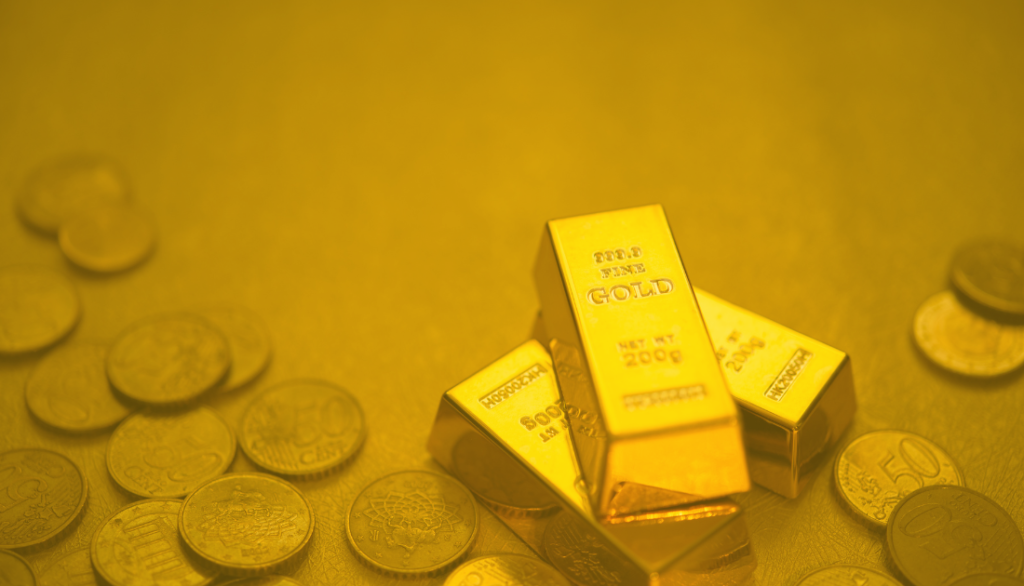As global markets brace for the potential implications of the U.S. presidential election and the Federal Reserve’s upcoming interest rate decision, gold prices remained stable on Monday.
Amidst an atmosphere of caution, gold continues to attract attention as a traditional safe-haven asset, influenced by factors such as currency fluctuations and international economic conditions.
Disclaimer – The information presented in this article is based on publicly available data and reflects the views of the authors as of the date of publication. It is intended for informational purposes only and should not be construed as financial advice. Market conditions can change rapidly, and past performance is not indicative of future results. Readers are encouraged to conduct their own research and consult with a qualified financial advisor before making any investment decisions.
At 2:30 GMT on Monday, spot gold was valued at $2,742.72 an ounce, holding close to last Thursday’s record high of $2,790.15. U.S. gold futures were also steady at $2,753.40, reflecting market hesitancy ahead of these significant events.
So far in 2024, gold has risen by 33%, driven by increased investor interest in safe-haven assets during periods of economic and political instability.
However, past performance is not indicative of future results, and investors should exercise caution when making investment decisions.
Anticipated Impact of the U.S. Election
As the U.S. presidential election approaches, with Democratic candidate Kamala Harris and Republican Donald Trump in a tight race, the outcome could significantly influence the gold market.
Giovanni Staunovo, a UBS analyst, suggests that if Trump were to win, there might be upward pressure on gold prices, potentially aligning with UBS’s target of $2,900 per ounce.
Conversely, a victory for Harris could lead to a temporary dip in gold prices, reflecting market expectations of different economic policies.
The election outcome may substantially affect investor sentiment, with gold likely reacting to anticipated policy changes and fluctuations in the dollar’s strength under a new administration. The dollar index remained stable on Monday, as investors closely monitored the candidates’ performance.
Recent economic indicators, including a weaker-than-expected job growth report, had a brief impact on the dollar, but the focus is now on the election outcome, which could introduce notable volatility for both the dollar and gold prices.
If Harris wins, experts predict a continuation of current fiscal policies, which may prompt the Federal Reserve to consider further rate cuts. This scenario could weigh on the dollar and potentially bolster gold prices, as lower interest rates generally enhance the appeal of non-yielding assets like gold.
A Trump victory could bring policy shifts that may elevate inflation, leading the Fed to reassess its rate-cutting approach, which could strengthen the dollar and temper gold’s recent upward momentum.
Technical analysis indicates the dollar index easing from its recent highs, with key support levels at 103.50 and 102.01, and resistance at 104.50. Meanwhile, gold’s rally has paused just below the $2,790 resistance level, with support levels at $2,710.71 and $2,630.39.
Fed’s Rate Decision
As the Federal Reserve prepares for its scheduled rate decision on Thursday, the market is on high alert.
According to the CME FedWatch tool, a significant majority of investors expect a quarter-point rate cut, although the specifics of the Fed’s statements regarding future rate adjustments will be closely scrutinized.
Historically, lower interest rates have supported gold prices by decreasing the opportunity cost of holding non-yielding assets. Thus, this decision is critical for traders in precious metals.
The Federal Reserve is navigating an economy filled with mixed signals, including a resilient job market and steady consumer spending. This environment has led many investors to turn to gold for stability during uncertain times.
In September, the Fed implemented a half-point rate cut aimed at preempting an economic slowdown. However, this decision sparked debate among economists, with some suggesting that strong job growth indicated a less aggressive approach might have been more appropriate.
The Fed remains cautious, closely monitoring inflation and labor data to assess future rate moves. This uncertainty is heightened by the upcoming U.S. election, which could have significant economic ramifications based on the fiscal policies of the winning candidate.
Gold’s appeal typically strengthens during such periods of uncertainty, offering a hedge against both economic and political risks.
Unlike stocks or currency-based assets, gold tends to maintain its value when market outlooks are unclear, making it a reliable option for those seeking security amidst fluctuating interest rates and evolving economic policies.
With the Fed’s next rate decision approaching, many view gold’s steady performance as indicative of its enduring role as a financial anchor, especially as central bank decisions and political changes could reshape the economic landscape.
Dollar’s Performance
The dollar index recently hit a two-week low, falling by 0.6%. This decline may make gold, priced in dollars, more attractive for international buyers, potentially stabilizing demand.
If the dollar continues to weaken, it may support gold prices, especially if other safe-haven assets become less appealing due to political or economic uncertainties.
Global Factors
Beyond the U.S., significant economic activities in China may influence gold’s trajectory. China’s Standing Committee of the National People’s Congress is meeting from November 4-8, with speculation that it could introduce further fiscal stimulus measures.
As the world’s largest consumer of metals, any such stimulus in China might strengthen demand for gold and other precious metals, which could positively affect prices.
Precious Metals Market Update
Other precious metals are also experiencing price adjustments. Silver rose by 1.1% to $32.79 an ounce after recently hitting a two-week low of $32.26.
Platinum advanced by 0.7% to $997.41, while palladium increased by 0.4% to reach $1,101.56. These movements indicate a broader interest in commodities as investors prepare for potential economic impacts from the U.S. election and global fiscal decisions.
Final Note – As global markets remain dynamic, investors should stay informed about the latest developments affecting gold prices and broader economic conditions. Monitoring shifts in political landscapes, monetary policies, and global economic indicators can provide valuable insights for making informed investment decisions.


